Triangle Genèse Trio
In the world of consumer audio, you don’t usually find both high style and remarkable performance embodied together in a “budget” product. Distinctive industrial design is largely reserved for the Very High End, where vast planes of aluminum, hardwood, copper or glass are milled into an over–spec’d behemoth. Despite that broad generalization, there are exceptions and it seem it’s usually The Europeans that best combine the disciplines of art and engineering.
Triple ƒ – Form Follows Function
One such example is the French firm of TRIANGLE. Located in Soissons, a 90 minute drive due northeast of Paris. They’ve been making loudspeakers since 1980. Their first model, the 1180 with it’s heavily sloped top baffle, looks slightly similar to the little SPICA TC-50 two–way I came to know and love in the mid ’80s. Shortly after Bowers & Wilkins pioneered the “tweeter–on–top” design in 1977, TRIANGLE brought out their own version four years later, the boxy CX2. In the same way that physical time alignment is now a given for many designs, so is the curved side panels TRIANGLE pioneered in 1990 with their ALTAÏR. Nowadays, you can’t swing a cat in a hi–fi showroom without hitting a lookalike. In addition to improved rigidity and aesthetics, those curvy bits also help to reduce internal resonances for smoother response.
That form–follows–function approach first voiced by architect Louis Sullivan carries through to today’s Genèse line, TRIANGLE’s least expensive range that’s not rectangular. The company manufactures six speaker lines plus a range of five, Class D–powered subwoofers. Their newish Borea family addresses the needs of home theater enthusiasts, with lower cost five channel systems plus an MTM center channel and optional, shallow wedge height channels that sit atop the rectangular boxes. One step up is the Esprit, with upgrades all ’round. Next to the Genèse range is their limited Anniversaire, comprised of a single, straight sided tower and stand mounter. Above those are Signature and top of the line Magellan, with increasingly elaborate enclosures with luxury finishes, plus re–engineered drivers. Those two top ranges are all fabricated in–house, while the more value–priced lines are made under supervision in China. Addressing the “lifestyle” market, they offer a powered bookshelf and floorstander equipped with Bluetooth 4.0 AD2P Aptx. The wireless speakers even have a phono input, so a low cost turntable is all you need to complete a starter system for someone new to the hobby.
One day mid–pandemic, I was delighted to find two cartons on my side stoop. Each cradled a Genèse Trio, the slick stand mounter that’s been my entré into TRIANGLE’s world. Along with the Trios, I was sent a matching set of S04 stands. Unlike the blasé black utilitarian stands I already had, the tapered S04 has a thick glass facia on the base, along with spikes and cable channels. TRIANGLE thoughtfully includes long narrow plastic bags to contain any dampening fill should you choose to use some. I went with Yesterday’s News, a pelletize recycled newspaper kitty litter preferred by yours truly but not by our two felines.
The Trio is a reflex design, with a flared port located at the front bottom of the curvy cabinet. The tweeter sits proud of the flat top of said enclosure, no parking a super tweeter on these puppies. Each 22 pound speaker is relatively tall and quite deep for a “bookshelf,” at 18.3 x 14.6 x 9.2″ and are visually nicely proportioned. In the gloss white finish I was lent, my better half much prefers their appearance to the utilitarian appearance of KEF’s LS50 Meta that preceded them. That tweeter is a 1″ titanium dome affair with its own sealed back chamber, a neodymium magnet and sharply pointed phase plug to reduce high frequency beaming. More akin to a miniature compression driver than a standard dome tweeter, the diaphragm is loaded with a small but deep horn to improve the impedance conversion from driver to air. It looks distinctive and space age, and lends an aggressive aspect to the speaker.
Frank M. Gazzo, Sales Manager for Triangle’s US operations told me via e–mail that the phasing plug at the back of the tweeter horn has been optimized to fit the shape of the dome to improve dispersion and optimize directivity. It allows the regulation of off–axis behavior to “…obtain a homogeneous response wherever the listener is located. On the other hand, without the phase plug, we see a higher level on axis, therefore a more marked directivity.”
The 6.3″ cellulose pulp mid/woofer has a more conventional dust cap phase plug, positive rubber surround and cutaway frame that accommodates the narrow front baffle.
In Use
After a bit of experimentation, the Trios landed in pretty much the same place as previous stand mounters; about 36″ from the rear wall, about 57″ apart, and a bit less than 6 feet from a tangent to the listening position. The source for my listening observations was a mac mini running Amarra Luxe and Audirvāna feeding an exaSound e22 MK II via VUE Cables’ VU-3 USB. The balanced DAC output feeds a Parasound JC 5 via Soundstring GEN II Beta 2-22S XLR/XLR, and the amp drives the Trios with ANTICABLES Level 3.1 speaker cables. Using this reference assembly of tech, I started with an ongoing task I have taken on; to make a quick visit to every new release recommended by the curators at Qobuz. With Amarra Luxe as the player, I’m always listening to everything from Afro–pop and classical to hip–hop and modern jazz. Lately, it’s also been the occasional shredding courtesy of Frank Zappa.
Once I got a handle on the speakers in my room, I dialed in some correction via my beloved thEQred (Full disclosure; I am co–founder of MAAT, the maker of the entire thEQ family). As you can see, the Trios required only a touch of correction, note the vertical dB scale at right, with the only case being a fairly narrow (Q=2.49) 0.9dB dip at 4.43kHz. The optional cascaded low pass at 11Hz was simply for subsonics, and the only actual correction I felt was needed was a 1.3dB dip at 153Hz that ameliorated a small bit of boxiness. That dip was particular to the Trio and not a room correction. The 0.7dB dip at 1120Hz suppressed the midband slightly which spread the soundstage a touch, but that was purely to taste.
As to my opinion of these (sort of) little white beasties, I found them lovely; a well behaved response as noted above. When I feel I have to apply less than a decibel of correction, somebody did something right. With an extended low end unexpected for their size, an open uncolored mid and a very smooth top end, dare I call them muscular and outgoing without ostentation? The Trios do get brighter if your listening position is higher that the tweeters, but normally that shouldn’t be a problem. In my room, the tweeters were a good foot above my ear level, and I found no significant fault there. Note that, despite the look of the agro, pointy phase plug, the Trio is not a speaker that will give you a clean, close shave like, say, a Joseph Audio or KRK for instance. So, if you’re looking for a presence peak or more aggressive treble to compensate for a dark amp, then these aren’t the droids. That said, their HF response does not extend much past 20kHz, so they don’t exhibit that subtle air I love from super tweeters or true ribbon drivers. Frankly, at their price I didn’t miss it.
Comparing the Trios to the aforementioned LS50 Meta, the KEFs are more polite overall. They offer less subjective heft on the low end since their cabinet volume is a touch smaller. Both speakers offer a no–hype mid and treble response, but the Trios provide less a detailed insight into your music’s minutiæ, and more of a direct connection to my bootie making me want to shake it. Don’t misunderstand that last statement. These are not speakers that favor some genres over others. That said, I find the Trios afforded more simple listening enjoyment than the LS50 Metas, which hew closer to a studio monitor attitude. The Trio’s port is tuned to 60Hz, but the low end doesn’t really start to subjectively weaken until you drop below 40Hz. Speaking of bass…though the Trios have a well articulated LF response, no single note bass here folks, they don’t offer the transient response in the low frequencies you’d expect from a sealed alignment or a more advanced design.
Remember I mentioned that the tweeter exists outside of the main enclosure volume? The magnetically–attached grill has a cutout at top that accommodates the tweeter. The Genèse Trio is rare in that I preferred the grill in place when listening. It seems the design team voiced the speakers with the grill in mind. As to actual speeds and feeds, the Trios are spec’d at a sensitivity of 90dB (2.83V at 1 meter), and a bandwidth of 45-20kHz ±3dB. Minimum impedance is 4.4Ω. They weigh 22 pounds each and carry a five year warranty.
I had only two small quibbles…Okay, one was a basic pain in the butt that would be so very simple to fix: the stamped metal, bi–wiring jumpers are mirrored or “handed,” which makes no sense as the binding posts both have right hand threads. So, one jumper stays in place when you tighten, while the other tries to worm its way out from under the binding post as you sock it down. In this case, visual symmetry trumps ease of use. The only other complaint is the tweeter finish. While the rest of the cabinet is finished in a hard gloss, the tweeter enclosure is skinned in soft, rubberized matt black that is easily marked and difficult to clean. Not a biggie but worth noting.
Overall, I thoroughly enjoyed my time with the Genèse Trios, and will be sad to see them go. That said, I am excited to hear more models from these Gallic geniuses. At a street price of $1500, there are very few competitors that both fill a room with surprising sound and complement rather than detract from the décor. Their speakers look stylish, sound wonderful, and have a small overall footprint so they won’t dominate a room. Pair them to a modern integrated, and you have the makings of an immersive and engaging stereo rig that will keep the whole family happy for years to come.
On Review
TRIANGLE Genèse Trio — $2990 per pair MSRP, $1500 street
S04 stands $499 per pair
Corporate:
Triangle Manufacture Electroacoustique
Avenue Flandres Dunkerques, ZI les Etomelles
02200 Villeneuve Saint Germain FR
US Distribution (wholly owned by Triangle):
Antal Audio Group
1048 State Rt 9
Queensbury NY 12804
Music To Review Trios By — Particular Standouts:
Sarah Jarosz — Blue Heron Suite [Rounder]
Squeeze — Spot The Difference [Valley Entertainment]
John Lennon — Plastic Ono Band (The Ultimate Collection) [Universal Music]
Avishai Chen — Two Roses [naïve]
Melody Garnot — Sunset In The Blue (Deluxe Version) [Decca]
Nick Hakim — Small Things [NYXO/tmwrk]
Calla Lily — The Brother Brothers [Compass]
Frank Zappa — Hot Rats [Frank Zappa Catalog]
Manchester Orchestra —The Million Masks Of God [Loma Vista]
Falle Nioke — Marasi EP [Prah]
Marianne Faithfull — She Walks in Beauty (with Warren Ellis) [BMG France]
Teenage Fanclub — Endless Arcade [Merge]
Akademie für Alte Musik Berlin — Mozart: Gran Partita – Wind Serenades K. 361 & 375 [harmonia mundi]
Jack Ingram — The Marfa Tapes [Vanner/RCA]
Axel Schlosser Quartet — To Satch and Duke [Double Moon]
Lisette Oropesa – Mozart: Ombra Compagna [PentaTone]
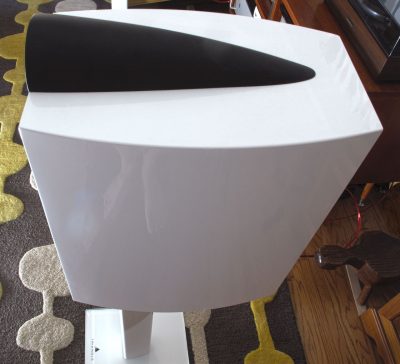
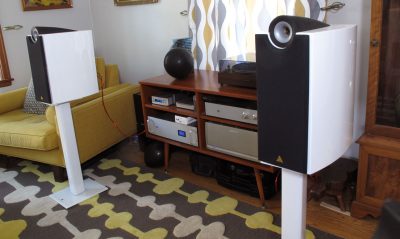
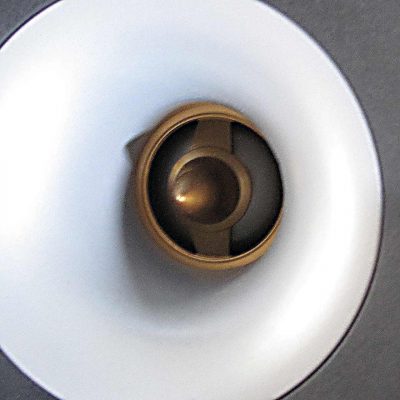
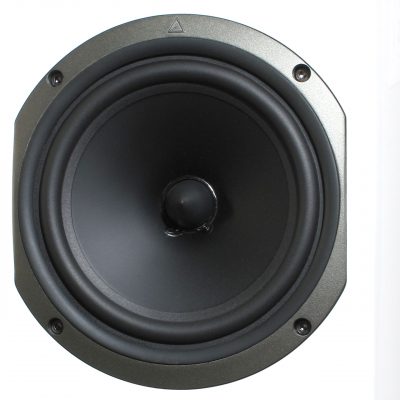
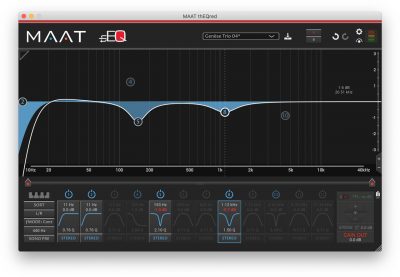
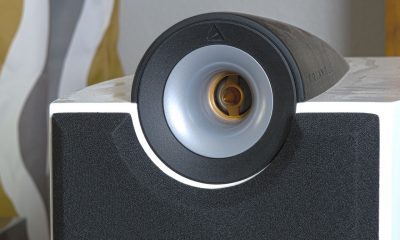
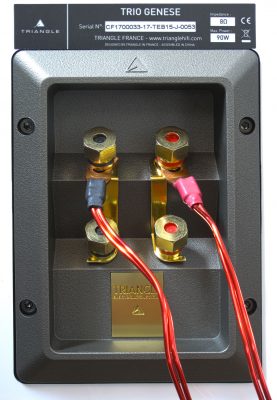
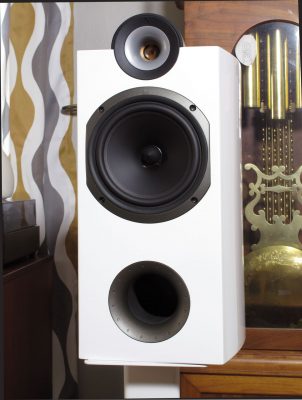




Love these SWEET-SOUNDING speakers, even if l am augmenting them with a sub. My only issue is that l might have some difficulty upgrading the crossover due to it’s shape and design.
Thank you for the technicsl evaluatuon of the speaker. However, as a consumer, I would like to hear about your listening experience of this pair with different kinds of music and comment on this issue.
Knowing the technical aspect will not tell me about the sound and I don’t think audiophiles will judge on speakers solely from the technical evaluation and not from the listening perspective. Thanks
Hello Michael,
Fair enough, and sorry for the omission at this late date!
What I can say is that loudspeaker are curious things…unlike any other part of a component hi–fi system, speakers are pleasing or distasteful depending on the listener. Many a time, I have listed to a rig where was I thinking…“This is not good!” while a colleague would opine, “Umm, nice sound.”
I recommend that you read competent reviewers with whom you agree. For that, you need to hear a component, in this case a speaker, then read a review that expresses an experience that parallels yours when you listened to that speaker. From then on, you have a reference critic that you can trust.